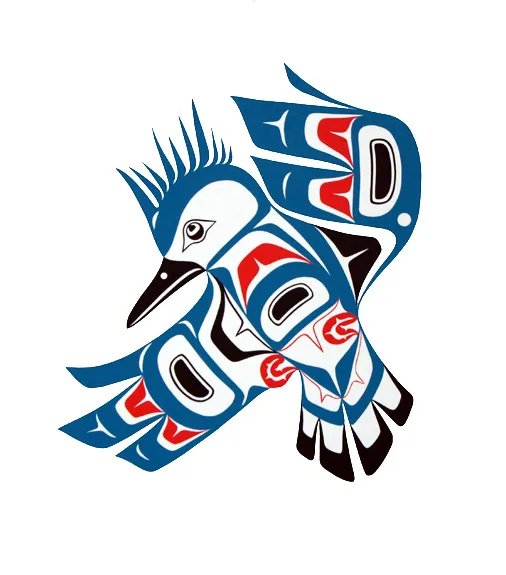In the tapestry of Native American culture, where every element of the natural world carries profound significance and symbolism, the Blue Jay emerges as a captivating figure. With its striking plumage and spirited demeanor, this avian wonder has etched its presence into the spiritual narratives of indigenous communities across North America.
Join 49native on a journey to explore the deep-rooted symbolism and spiritual connotations attributed to the Blue Jay in the rich tapestry of Native American traditions, A Complete Guide: Blue Jay Symbolism Native American.
Blue Jay Symbolism Native American

In the intricate web of Native American traditions, every creature, every aspect of nature, holds a unique place and meaning. Among these, the blue jay emerges as a captivating symbol, bearing profound significance that transcends the confines of the natural world.
This article embarks on a journey through the heart of Native American culture to unravel the symbolism and significance of the blue jay, shedding light on its role as an omen, a harbinger of change, and a guide to the realms beyond.
Who is the Native American god blue jay?
In the rich tapestry of Native American folklore, characters and creatures often take on multifaceted roles, reflecting the diverse aspects of human existence. Among these intriguing figures, the blue jay stands out as a prominent and enigmatic character, particularly in the traditions of the Chinook, Chehalis, and various other Northwest Coast tribes.
Blue jay, a trickster hero, weaves a narrative that is both benevolent and comically foolish, offering a unique perspective on the interplay between humanity and the natural world. This article delves into the captivating tales of Blue jay, unraveling the layers of his character and shedding light on his significance within Native American culture.
What does the blue jay mean to the Cherokee?

In the rich tapestry of Native American symbolism, the blue jay emerges as a captivating and multifaceted figure, revered for its intricate meanings and associations. Among various tribes, including the Sioux, Winnebago, Chinook, and Cherokee, the blue jay takes center stage as a symbol of significance, offering insights into the human experience and the natural world.
In this exploration of the Native American Blue Jay symbolic meanings, embark on a journey through the wisdom and stories that have woven this bird into the cultural fabric of indigenous communities.
Blue Jay and “Double Vision”
For the Sioux people, the blue jay carries a profound message of “double vision,” signifying greater clarity and insight. They draw inspiration from the blue jay’s choice of nesting spaces, often found among the sturdy branches of fir and oak trees.
To the Sioux, this reflects qualities of strength, endurance, and a long life. While the blue jay may be renowned for its noisy and assertive nature, it also assumes the role of a trickster in their stories—a clever and mischievous character who, in his own cheeky way, aids humans.
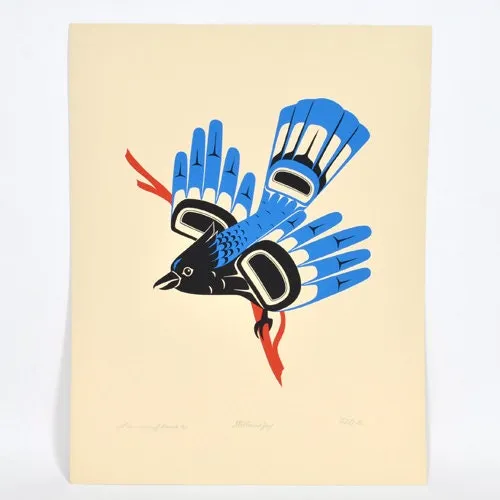
The Ego and Humility
Shamans in Native American cultures teach that the blue jay symbolizes the human ego and pride. Just as these birds can exhibit an arrogant spirit and occasionally raid other nests for sustenance, they also embody opportunism.
Blue jay serves as a reminder to treasure our existing blessings and to remain vigilant for open doorways in life. It underscores the idea that need not succumb to victimhood but can wield our abilities wisely, staying present and attentive in our daily existence.
The Tale of Blue Jay’s Singing Voice
In Native American narratives, there exists a story of Blue Jay possessing a once-beautiful singing voice that attracted people from far and wide. However, the admiration fueled Blue Jay’s vanity and arrogance.
In response, the Earthmaker decided to teach Blue Jay a lesson in humility. Overnight, Blue Jay’s melodious voice transformed into something rough and discordant, mirroring his true nature. This altered song serves as a perpetual reminder of the importance of honoring our gifts rather than using them to feed our hubris.
The Trickster Archetype
Across different tribal traditions, such as the Chinook and Coast Salish people of the Northwestern U.S., Blue Jay embodies the archetype of the trickster. He is portrayed as careless, arrogant, and foolish, yet his antics ultimately benefit humanity through their comical folly.
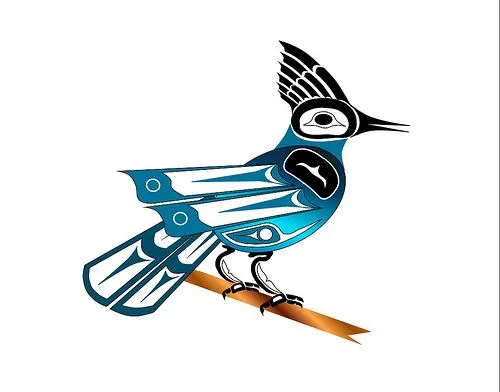
One legend recounts how a group of exasperated men tossed Blue Jay into a river after his excessive boasting led to his defeat in an archery contest. This act led to his transformation into the present-day bird form and a timeless curse.
Embracing Playfulness and Humor
Blue Jay’s symbolism extends to realms of slapstick humor, silliness, and folly. Encounters with Blue Jay energy may signal a need to reintroduce humor and playfulness into one’s life. It serves as a gentle reminder not to take oneself too seriously, encouraging a lighthearted perspective on the world.
The Connection to Other Deities and Cultures
Interestingly, the Aztec God of Sun and War, Huitzilopochtli, shares certain traits with the archetypal energy of Blue Jay. Despite being associated with the hummingbird, Huitzilopochtli used a distinctive call reminiscent of a Blue Jay’s to guide the Aztec people to Mexico, highlighting the bird’s influence beyond North American tribes.
Tongues of Blue Jays and Ascent
Among the Haida people of Canada’s west coast, the practice of eating specific animal tongues was believed to bestow corresponding traits. In this context, consuming the tongues of Blue Jays was thought to empower individuals to climb and scale new heights in their endeavors.
Cherokee Weather Predictions
In Cherokee culture, the blue jay is intimately connected to the wind and is regarded as a predictor of weather changes. Its presence or behavior is considered a sign of impending shifts in atmospheric conditions.
The Native American Blue Jay symbolically weaves together threads of wisdom, humor, and humility, offering a unique lens through which to view the intricate relationship between humanity and the natural world.
What is special about a blue jay?
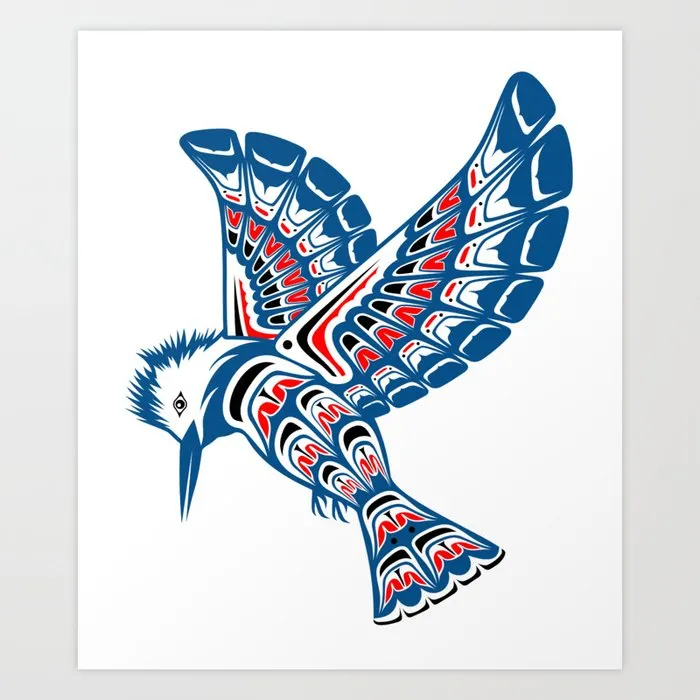
Blue jays, those familiar and vibrant songbirds, often grace our gardens and woodlands, leaving an indelible mark with their perky crest, striking blue, white, and black plumage, and their unmistakable, raucous calls.
Beyond their charming appearance, these birds are celebrated for their remarkable intelligence and intricate social structures, characterized by strong family bonds. In this exploration, delve into the fascinating world of the Blue Jay, uncovering its role in nature’s tapestry and its unique preferences.
Blue Jay: A Study in Intelligence
One cannot help but be captivated by the keen intellect of the Blue Jay. These birds have earned a reputation for their astute problem-solving abilities and remarkable memory. They are often quick to adapt to changing circumstances, a trait that has endeared them to researchers and nature enthusiasts alike.
Whether it’s deciphering complex bird feeders or outsmarting potential predators, Blue Jays consistently demonstrate their intellectual prowess.
Family Matters: Tight-Knit Social Bonds
Blue Jays are not only distinguished by their intelligence but also by their strong sense of family. They form tight-knit social units, with family members cooperating in various aspects of their lives. These familial bonds extend to raising offspring, where both parents share the responsibilities of nurturing and protecting their young. This commitment to family contributes to the Blue Jay’s resilience and survival in the wild.
The Oak Tree Connection
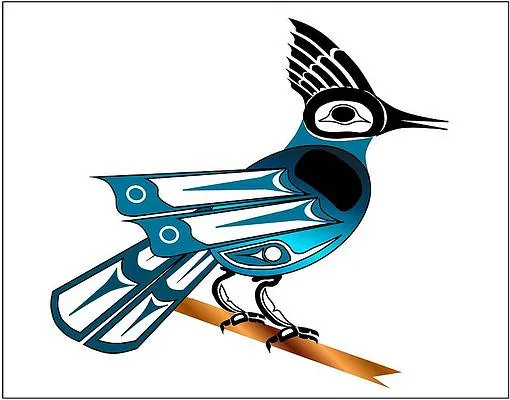
Nature has bestowed upon Blue Jays a unique role as silent gardeners of our woodlands. Their penchant for acorns plays a pivotal role in the propagation of oak trees. During the last glacial period, Blue Jays unknowingly became instrumental in spreading oak trees across the landscape.
By caching acorns for later consumption and occasionally forgetting their hidden treasures, these birds inadvertently planted the seeds for future generations of majestic oaks. Their contribution to forest ecosystems is a testament to the intricate web of life in which they play a vital role.
Feeding Preferences: A Gourmet Selection
Blue Jays, discerning diners of the bird world, exhibit particular preferences when it comes to feeding. They favor tray feeders or hopper feeders mounted on posts rather than hanging feeders. When it comes to their culinary choices, Blue Jays have a penchant for peanuts, sunflower seeds, and suet. Their selective eating habits add a touch of sophistication to their presence in our backyard birdwatching adventures.
Planting for the Future
For those who wish to attract Blue Jays to their outdoor sanctuaries, planting oak trees is a thoughtful gesture. By nurturing these trees, ensure a bountiful supply of acorns, a valuable resource for Blue Jays and a host of other wildlife. In doing so, contribute to the preservation of these intelligent and resourceful birds, fostering a harmonious coexistence with nature.
Birdbaths: Quenching Their Thirst

In addition to their dining preferences, Blue Jays also indulge in occasional sips from birdbaths. Providing a clean and inviting birdbath in your outdoor space can be a delightful way to welcome these avian visitors. It not only offers them a source of hydration but also allows for moments of observation and appreciation of their vibrant plumage and lively antics.
In the world of avian wonders, the Blue Jay stands as a testament to nature’s ingenuity. Its intelligence, social bonds, ecological contributions, and dining preferences all contribute to its unique charm.
As cultivate a deeper understanding of these remarkable birds, enhance our connection to the intricate ecosystems they inhabit, reminding us of the profound interdependence that defines our natural world.
Learn more about: Native American Horse Symbol Meaning

